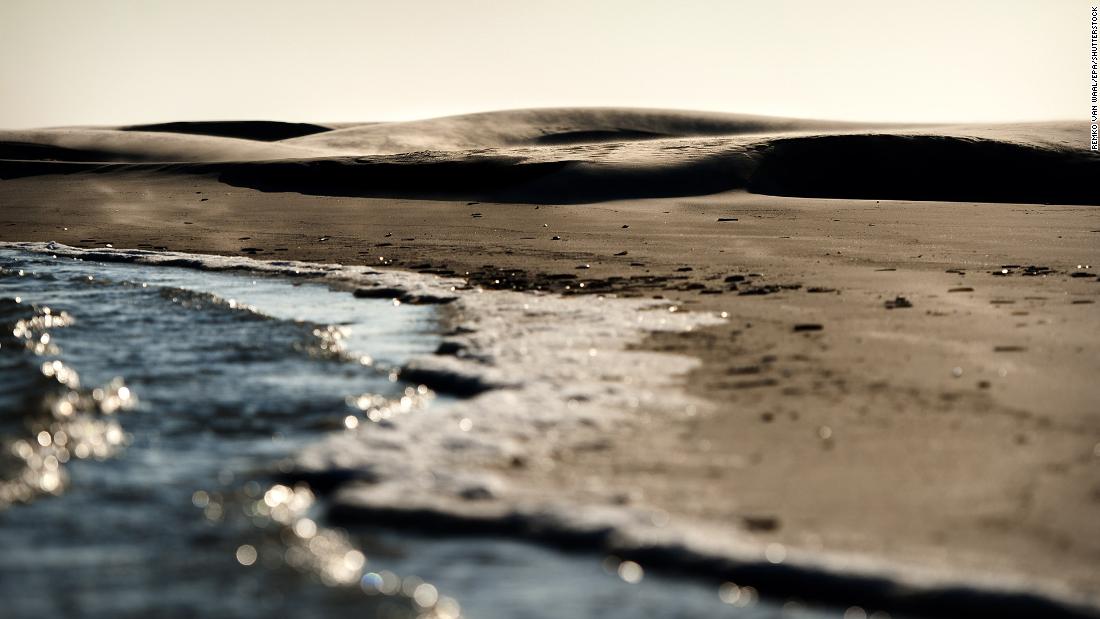
But after the Dutch and German governments approved the development of a new gas field roughly 12 miles from Schiermonnikoog’s shores, the island’s mayor is anxious about its future.
“We are very concerned that the gas drilling will damage the area,” Mayor Ineke van Gent told CNN Business. “We also believe that there is no need to drill [for] new gas at all and that we should invest much more in renewable energy.”
The gas field near Schiermonnikoog isn’t scheduled to start delivering gas to Dutch and German households until 2024. Once turned on, it could be operating for decades, with licenses valid until 2042.
“In principle, we need to get rid of all the fossil fuels, and we need to get rid of them very fast,” said Han Dolman, director of the Royal Netherlands Institute for Sea Research, who opposes the project. “It’s not an immediate solution to anything [related to] the Russian gas crisis.”
ONE-Dyas, the Dutch company running the development, said it has been in frequent contact with local stakeholders since 2018, and conducted an extensive environmental impact report that was reviewed by regulators. Domestically-produced gas also has a lower emissions footprint that natural gas that’s imported from other countries, it added.
The great gas rush
The situation in Europe is “perilous” and the region must prepare for a “long, hard winter,” according to Fatih Birol, executive director of the International Energy Agency.
Even if European countries manage to fill their gas stores to 90% of their capacity, the region is still likely to face supply disruptions early next year if Russia decides to cut off gas deliveries from October, the IEA said.
The risk has energized countries to find alternate fuel sources and conserve what they can.
It has also empowered politicians to back an expansion of the gas sector with a conviction that would have been unthinkable just a year ago due to climate concerns. Since February, government officials have lifted production caps and approved new drilling sites, often citing the need for pragmatism during a period of high stress.
“You’re just seeing this 180-degree turn around the world,” said Oswald Clint, an analyst at Sanford Bernstein who covers the energy sector.
A long-term view
Some of these gas projects could increase energy supplies for Europe this winter in case Russian President Vladimir Putin turns off flows from Russia.
Luca Benedetto, the chief financial officer, said in a statement that the decision was made “in the context of the increasing necessity for European domestic energy security and a highly encouraging pricing climate.”
Tara Connolly, a gas campaigner with Global Witness based in Brussels, said one of her concerns is that the projects won’t be necessary once they’re actually completed.
“Just before Ukraine, there was really a sense that Europe had enough gas infrastructure, even in the event of a significant disruption,” Connolly said. “Now it’s really a different picture.”
Plus, given the timeline, renewables could fill the gap instead of natural gas, which has a lower carbon footprint than oil and coal but still contributes to global warming, according to Connolly.
The ecological risk
It’s a view shared by the mayor of Schiermonnikoog. She’s also worried about the protection of a sensitive UNESCO World Heritage site.
“My main concern is [the] sinking of the soil, which means that we also have problems with living on the water,” van Gent said.
“It’s in a nature reserve area, so it sort of doubles down in terms of impact,” he said. “You should be careful in these areas to do anything, let alone start new gas production platforms.”
Carsten Mühlenmeier, president of the German regulatory agency in charge of North Sea permits, said that the “territorial sea is a sensitive area where undisturbed use should be favored over mining and private interests,” especially given the need to decrease demand for fossil fuels. Still, it gave its okay once the Netherlands signed off and as the political winds shifted in Berlin.
“The Russian war of aggression on Ukraine proved that guaranteeing a supply of energy is a challenge, which overrides certain safety measures, especially environmental concerns,” Mühlenmeier told CNN Business.
“It is completely irrational for the government to approve — and heavily subsidize — a project like Jackdaw that does nothing to address the energy price crisis while contributing to climate change,” climate campaigner Lauren MacDonald said. “Our dependence on fossil fuels is at the root of both crises, yet the government continues to try and plow ahead with new oil and gas projects.”
— Rosanne Roobeek and Anna Cooban contributed reporting.
